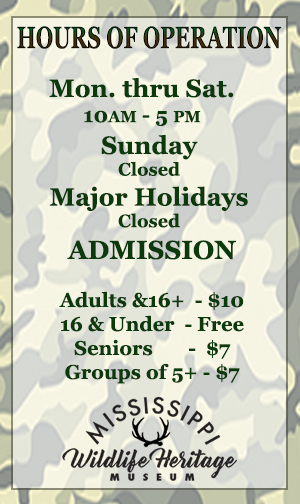by Gaila Oliver | Mar 10, 2017 | Bird Watching, Hunting, sportsmen, Wild Turkey Hunting, wildlife
Back in the Good Old Days, we were permitted to shoot “Jakes,” which is the term most of us use for young turkey gobblers. Since the Mississippi River bottomland woods I usually hunted in was knee-high in bull nettle by early spring when the season started, I rarely looked for a beard on my turkeys. If a head stuck up out of the bull nettle, and it was red, that turkey was going to get shot at.
The which did not necessarily mean a fatal encounter for the turkey, because I have long been famous for missing wild turkeys – there’s even a book to that effect! They do something to me, and although in my lifetime I have honestly fired over 1000 shotgun rounds at turkeys, I can only admit to bringing maybe 250 back to camp. I used to take a box of shells (that was back when there were 25 shells in a box!) for a weekend turkey hunt on Woodstock or Montgomery Island.
Howsomever, the state Game & Fish people decided a few years ago that young turkeys needed to be spared to grow in statue and wisdom, so now a hunter has to examine (on the hoof, now: we ain’t talking ground-checking!) the bird’s breast before firing, to see if it has a long enough beard to legal.
Therefore, when a veteran turkey hunter is taking a neophyte along for the hunt, care must be taken to instruct the rookie on what comprises legal game. Sometimes that ain’t enough either. I once took a neighbor with me, and we were seated against a big sycamore, me facing south, Rick facing west, which let me cover to the right shooting left-handed, and him cover to the left shooting right-handed. I’d been calling a little over a half-hour when I heard, “Psst! Psst!” and cocked an ear to hear him ask softly, “Is-that-a-turkey?”
This was a farm boy, so turkeys had been a part of his life forever. So I assumed that whatever he had sighted was far off, and started scanning the woods. “Not out there!” he hissed. “Right here!” Sure enough, a big gobbler stood in the logging road, thirty yards away – but he didn’t stand there long, he took flight!
“So, that was a turkey, huh?” Rick mused.
“What did you think it was, a penguin?!” I snorted. He later said he meant to ask if it was a gobbler, legal to shoot. Sure.
I took my bride with me one time, and had a turkey coming, gobbling every other step, so we were ready. I thought. When he stepped into a clearing in range, Betsy exclaimed, “Isn’t his head red?!!” Out loud! As the big gobbler spun to take flight, she calmly noted, “Wonder how much he weighs?” Out loud, again!
We ought to introduce our children and grandchildren to blood sports as soon as possible, and here again, we must take pains to describe beforehand what turkeys look like, how they approach, and which ones are legal game. Oftimes, the youngster has much better vision than the adult anyway, so the extra pair of eyes is really appreciated, and the kid is urged to watch carefully and report movement to the adult, so that the elderly one may be aware of what’s out of peripheral vision.
The youngster in question was only five years old, but had hunted deer and doves with granddaddy, so a spring turkey hunt was a natural progression. They got to the woods and hooted, and a gobbler answered immediately from his roost close to a small field. The hunters snuk within 150 yards of the roost tree, and the adult stuck up two hen decoys in the edge of the field, then blinded himself and the boy nearby, sticking up branches before them. He loaded his gun as the dawn came, picked up his call, and clucked. Across the field, the turkey double-gobbled, and sailed out of the tree, landing in a half strut right before the decoys! The youngster jumped to his feet, pointed, and shouted, “THERE’S ONE NOW!”
The rest of the day, the man complimented the kid on how well he could see and identify a wild turkey gobbler, as he should have. But they didn’t see another.
by Gaila Oliver | Mar 3, 2017 | Bird Watching, Hunting, sportsmen, Uncategorized, wildlife
I told you about Stoney, the half-grown barred owl Joe and I rescued from an automobile accident (actually, he flew into the side of Joe’s pickup) with the help of Dr. Richard Griffin, the late vet who was allergic to feathers. After almost a month of recuperation, helped along by antibiotics for the first week or so, Stoney faked me out during a morning feeding session, and proved that he was healthy enough to be released into the wild again.
For the next week or so, he hung around the house, probably hoping for more feeding or scratching sessions. He’d gotten addicted to having the back of his head scratched, during which he’d keep bending his head backwards into the scratching fingers until he was facing plumb the opposite way – from over the top! I knew an owl could turn his head slap around sideways, but had never known (or read either!) that he could turn it backwards from straight up. He loved being scratched!
He apparently formed another habit: late in the afternoon I’d carry him in his large milk-crate cage to the Swimming Hole with me. I kept a metal stool out there that I’d submerge in the shallow end, then place Stoney’s cage on it. He had a brick in there to stand on, and I’d ease the cage into the water to where just the top of the brick was out. Stoney would drink his fill, and snatch at dragonfly nymphs that came out right at dusk. It was a regular ritual for the two of us.
The first few times he came back, I saw him perched above the patio, where we usually fed him venison or dove gizzards (it being dove season when we hosted him). Then I heard him on several nights, hooting his low “Who-who-who cooks for you” calls from the pecan tree outside our bedroom window, or from the dead locust tree in the persimmon grove. One night he was being regularly answered by another owl from the ditchbank at the back of the yard, and so I knew Stoney must be reaching puberty.
With all our young wild pets over the years – a dozen possums, half-dozen coons, four screech owls, etc – we’ve had a hard and fast rule: we’d turn them loose when they reached puberty. It doesn’t matter whether it’s a coon, possum, screech owl, or teenaged boy – when they fall in love, you can’t tell them another doggone thing, so you might as well turn them aloose!
Obviously, we had turned Stoney loose in the nick of time, and I figured we’d never see him again, at least, to know it was our Stoney we were looking at.
Then our neighbor came over one day, a full month after the owl’s release. “I just saw Stoney!” he cried.
“How’d you know it was him?” we asked Jim, hoping it was so, but doubting proof.
“Well, I drove up to my pond, and there was something over at the shallow end, just standing there. So I eased up closer to see what the heck it was – a new type heron, or something, I figured – and durned if it wasn’t an almost-grown barred owl, sitting there in water up over his legs just as calm as you please! Where else except Brownspur would you expect to find an owl wading around in the pond?”
Had to have been Stoney, we reckoned. He’s obviously adapted to a new method of feeding, and my bet is that the dragonfly population will decline drastically here at Brownspur for the next few years. What will his kids end up doing – living on tadpoles and minnows?
Oh, No!! What about our neighbors to the south, who have catfish ponds? They’re having enough trouble now with cormorants – what if they find out I’ve adapted the owl population to wading in ponds and eating the inhabitants thereof?
Will the Brownspur owls then begin to grow longer legs, like flamingos or whooping cranes, to further adapt to their feeding places? Will their beaks get longer? Where are the evolution theorists when we really need them?! Will their majestic hoots become just loud gargles? We need help out here, you biologists!
So, if in the near future you spot a barred owl wading in your fishpond – well, offer to scratch behind his head. If he likes that, it’s got to be Stoney, or one of his progeny!

